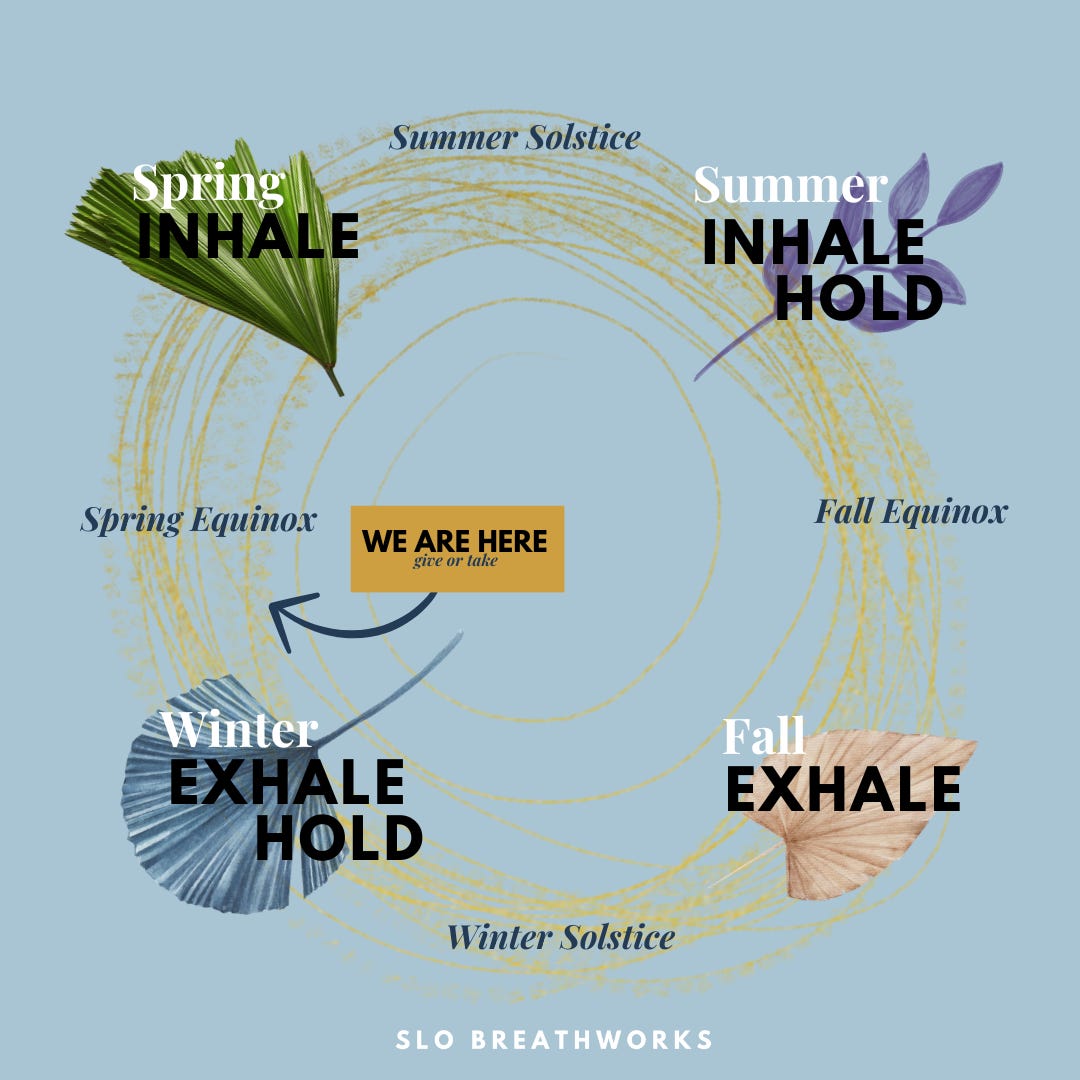Hello transition of the exhale hold
and how to wade it without judgment
With only 25 days until the Spring Equinox, the end of the season of the exhale hold has arrived.
This is a special time to take stock of what your relationship with transitions. Noticing how your presence and breaths shift as you envision springs blooms. Witnessing what parts of you are grasping onto the past, craving for more time to dwell in winter’s remembering.
How do I navigate the transition between the exhale hold (winter) and the inhale (spring)?
This question is an important one and one that I hope to continue to explore through gentle breathwork. The idea that transitions are difficult is not new. The nervous system loves the same old, same old, even when it is no longer working. Since you are reading this, I imagine you are all too familiar with feeling a bit of trepidation during transitions.
Here is a short breath exploration to focus into the present and play with the transition between the inhale hold and inhale. It is a subtle practice so remember to bring some lightness to it. 🤸🏻
This specific transition, within the context of the seasons of the breath, is a stark one. We are transitioning from the exhale hold into the beginning of the inhale. The pressure on the lungs is low. The alveoli are waiting for the oxygen to arrive to continue the gas exchange. And, your mind is becoming very mind-full.
I know that extending the exhale hold (not usually for more than five counts) brings up fear and concern around the air hunger. It also never ceases to amaze me the memories that flow in this part of the breath. It sometimes shoots me back to when I was little playing basketball, and not being able to get enough air into my lungs. Or, looking up at the off-white ceiling as I tried not to look at my crooked right arm, waiting for an ambulance.
Here are three things that continue to help me through the transition between the exhale hold and inhale.
Massaging the jaw very slowly (and softly) while holding the exhale to physically remind the jaw to release the sensations coming up.
Naming the discomfort. Saying to myself, “This is uncomfortable and I am okay.”
Remembering playfulness in my body (softness, beginner’s mind, and awe) when the judgment arises.
I’d love to hear if you have any other ways to trudge with a smile or two through transitions.
Sending you slow breaths today,
Sarah
TAKE A SLOW BREATH AND GUESS
The answer to the last breath note’s poll is: Most of the nerves for the sympathetic nervous system (the stimulating arm of the autonomic nervous system) live in the upper part of the lungs. So, when you fall into shallow breathing, you are stimulating those fight-or-flight nerves. The more you can play with moving your stomach, letting it grow on the inhale and inhale hold, and letting it soften on the exhale and exhale hold, the more pressure can be exerted on the lungs to draw the air lower into the lungs where the nerves of the relaxation arm of the nervous system live.
I’ll share the answer in the next breath note. Happy guessing! And remember to take a slow breath as you choose your answer. 😉
WAYS TO BREATHE WITH SLO BREATHWORKS
Online 1:1 Breath Resets - Schedule here
An online breath reset is for you to connect with your breath and learn how different techniques can help you cope with stress. Liken this to a 45-minute personal training session but for your nervous system and brain, letting the breath be the only equipment you need. Plus, an open heart and a willingness to witness what the seasons of the breath hold for you.
Slo Breathworks also offers breathing experiences for busy doers on retreats. A one-hour breath walk or out-of-the-box workshop are great ways to set the tone for the retreat or restore grounded focus during the day. Say hi.


